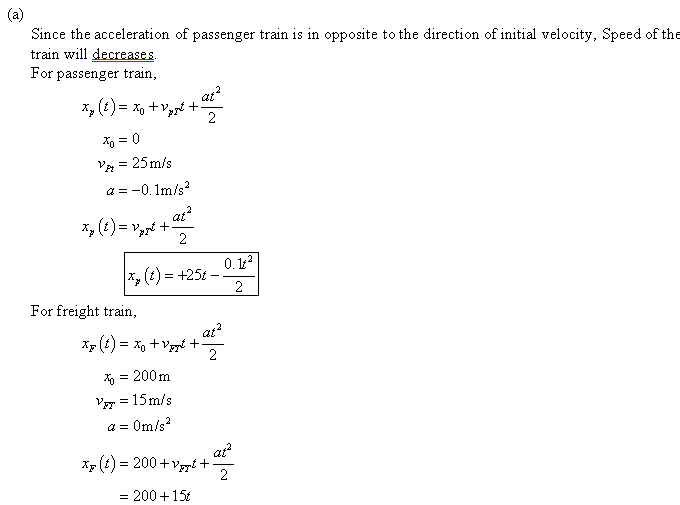3. A passenger train is traveling at 25.0 m/s on a straight track when the engineer spots a freight train, whose caboose (last car) is 200 m ahead on the same track. The freight train is traveling at 15.0 m/s in the same direction as the passenger train. Worried about a collision with the slower train, the engineer of the passenger train immediately hits the brakes, causing a constant acceleration of 0.100 m/s² in the direction opposite the train's velocity. Meanwhile, the freight train continues with constant speed. In this problem, we will work out whether the two trains will collide.
Displacement, Velocity and Acceleration
In classical mechanics, kinematics deals with the motion of a particle. It deals only with the position, velocity, acceleration, and displacement of a particle. It has no concern about the source of motion.
Linear Displacement
The term "displacement" refers to when something shifts away from its original "location," and "linear" refers to a straight line. As a result, “Linear Displacement” can be described as the movement of an object in a straight line along a single axis, for example, from side to side or up and down. Non-contact sensors such as LVDTs and other linear location sensors can calculate linear displacement. Non-contact sensors such as LVDTs and other linear location sensors can calculate linear displacement. Linear displacement is usually measured in millimeters or inches and may be positive or negative.



Step by step
Solved in 2 steps with 2 images









